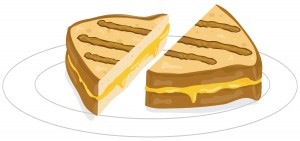A Day Of Remembrance
For those of us who live in the states, Memorial Day, originally called Decoration Day, is May 30th. It’s a day of remembrance for those who died in our nation’s service. It was first observed on May 30th, 1868 when flowers were placed on the graves of Union and Confederate soldiers at Arlington National Cemetery.
Remember The Nurses, Too
I’m a nurse and am a proud supporter of my profession. This photo of military nurses (although not of anyone I know) is in honor of my Aunt Mary and all nurses. Aunt Mary is now 93 and was an army nurse in the second World War. Sent overseas to replace a nurse who had been killed in the line of duty, she served in a mobile medical unit that was right behind the American front lines in Italy.
A Three Day Weekend
In 1971 congress extended Memorial Day into a three day weekend. One consequence of this is that it made it easier for people to be a little less focused on the spirit and meaning of the day. It did create a weekend that often signifies the unofficial beginning of summer, especially for those of us who live in places with seasonal changes and cold snowy winters.
Parades, Picnics, And Barbecues
Memorial Day is a day of national ceremonies and small town parades, but also of barbecues and picnics. For those of us conscious of what we eat, Memorial Day also signals the start of a whole set of thoughts: how to avoid the glut of cheeseburgers and hot dogs; the mayonnaise laden potato and macaroni salad; the plates full of brownies and cookies; the dripping ice cream cones (sprinkles are mandatory); the freshly baked blueberry and peach pies; and the beer, wine, mojitos, soda, and sweet tea to wash everything down.
Gotta have a plan
So, as we remember the people who gave service to their country, please think about honoring yourself by choosing what’s best for you. Holidays and celebrations present special challenges for those of us who have trouble dealing with abundant food that seems to beckon to us any which way we turn.
Some SocialDieter Tips To Help You Do This:
- Before you grab some tasty morsel, ask yourself if you’re really hungry. Odds are, with a display of temptations in front of you, you may not be hungry but just want to eat whatever is staring at you for reasons not dictated by your stomach.
- A good question to ask is: do I really need to stand in front of the picnic table, kitchen table, or barbecue? The further away from the food you are the less likely you are to eat it.
- If you know that the barbecued ribs, the blueberry pie, or your cousin’s potato salad is your downfall, either build it into your food for the day or steer clear. For most of us swearing that you’ll only take a taste is a promise doomed to fail.
- If you’re asked to bring something, bring food you can eat with abandon – fruit, salad with dressing on the side, berries and angel food cake for dessert (no fat in angel food cake). That way you know you always have some “go to” food.
- Don’t show up starving. How can you resist when your blood sugar is in the basement and your stomach is singing a chorus?
- Really eyeball the food choices so you know what’s available. Then make a calculated decision about what you are going to eat.
- Take the food you have decided to eat, sit down, enjoy it without guilt, and be done with it. No going back for seconds.
- If you’re full, stop eating and clear your plate right away. If it hangs around in front of you, chances are you’ll keep picking at it.
- Give yourself permission to have the special dessert or a burger or ribs. If you don’t, you’ll probably be miserable and there’s some chance that you’ll get home and gobble down everything in sight – because you made yourself miserable! Eat it and enjoy it (no seconds).
- If hanging around the food gets to be too much, go for a walk, a swim, or engage someone in an animated conversation. Hard to shove food into you mouth when you’re talking away.




